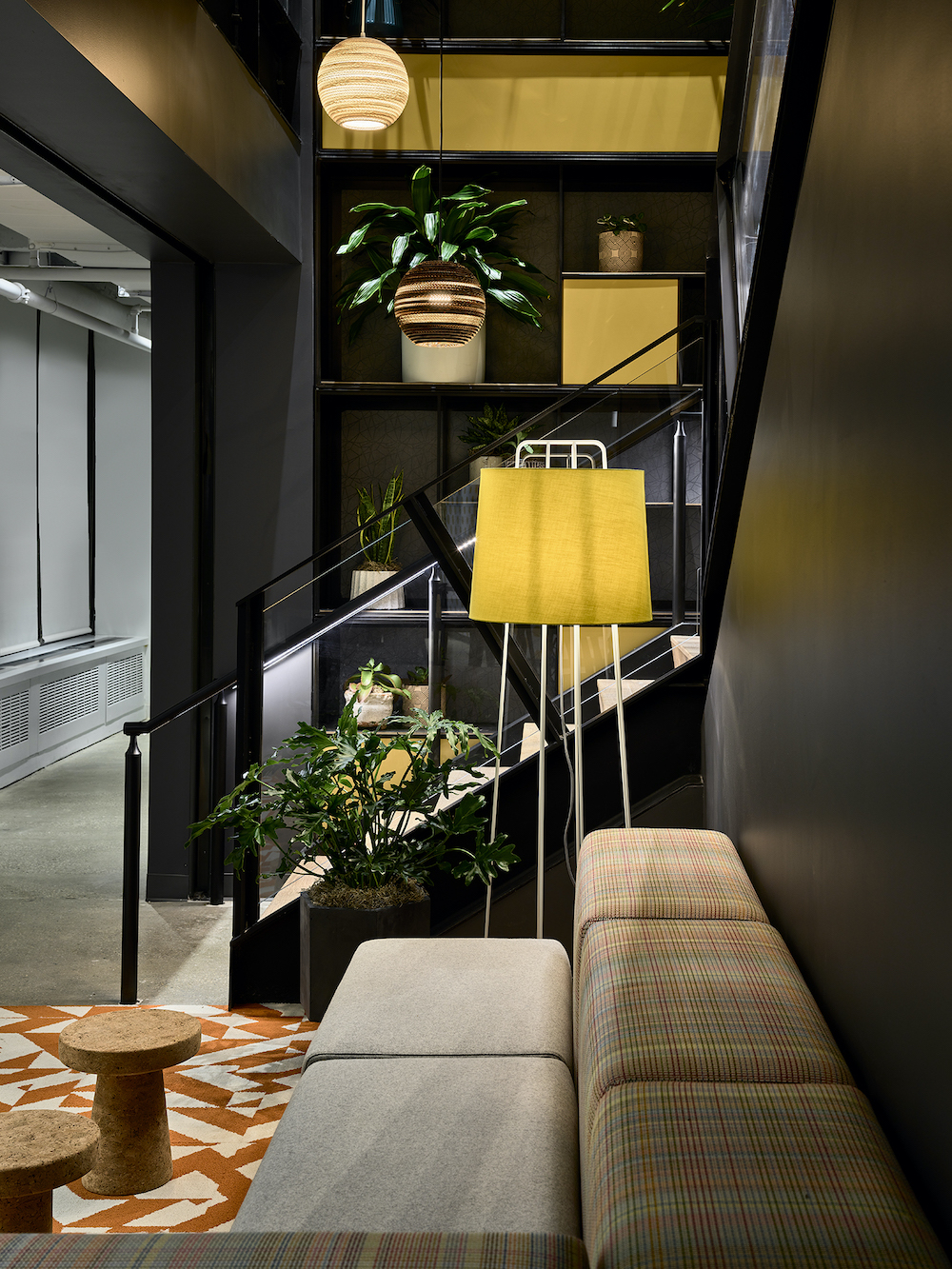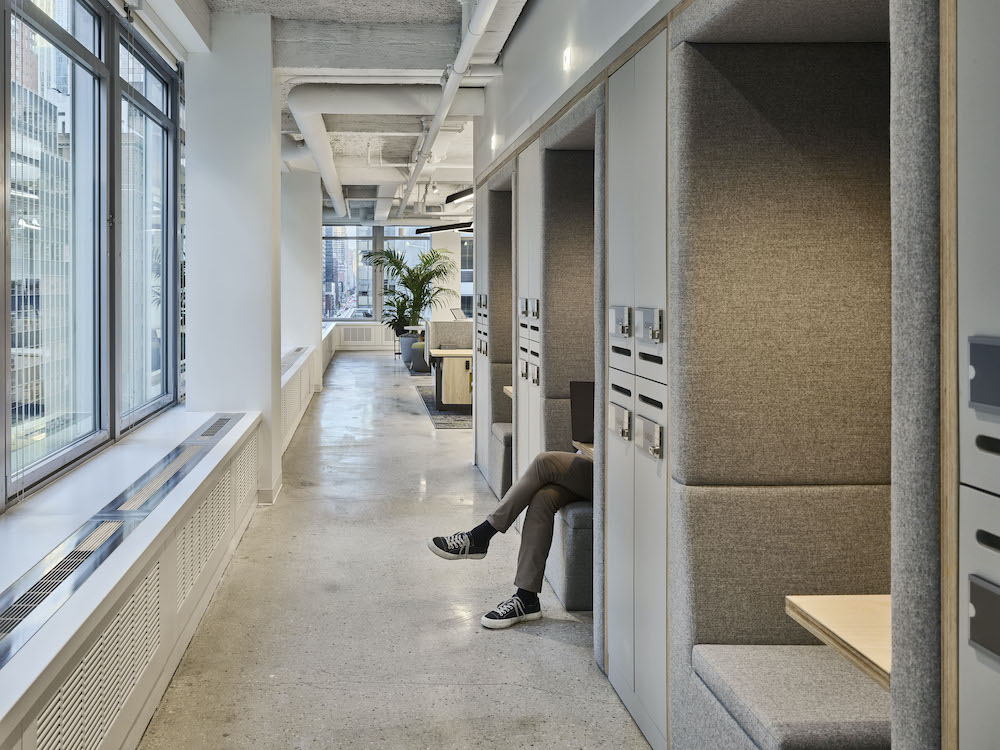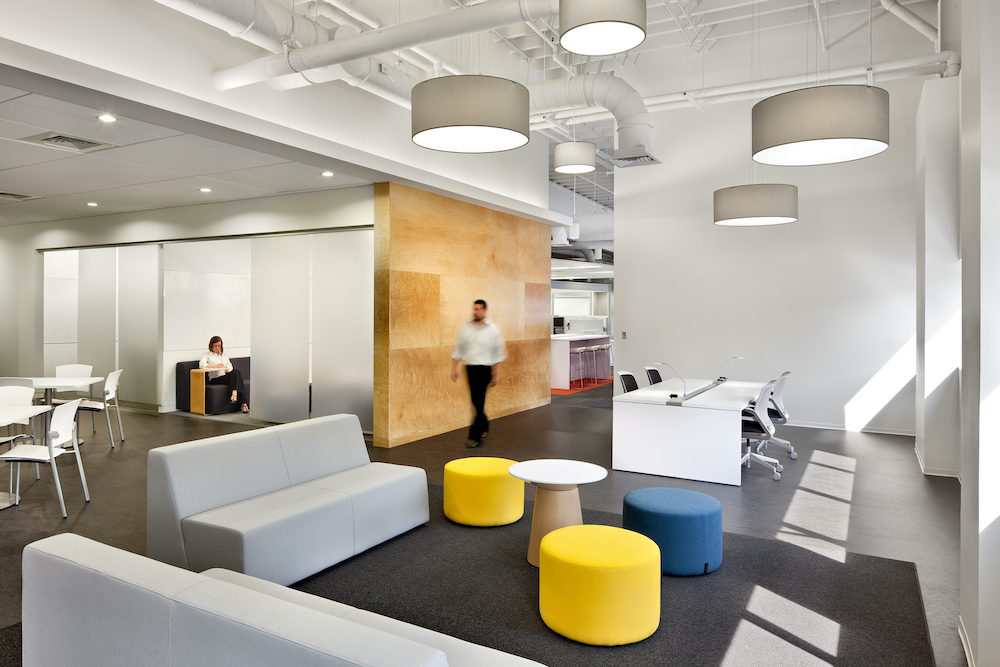Erica Fitts of FCA explores how offering choice and variety in an office plan can help all employees feel welcome.
Neurodiversity is a broad term describing many different conditions as it relates to the unique ways a person’s brain works. There is no one-size fits all design solution for creating a more comfortable workplace environment for neurodiverse individuals, however, offering choice and variety in an office plan can help all employees feel welcome.
The Importance of Choice
Neurodiversity encompasses various conditions, such as autism, attention deficit hyperactivity disorder (ADHD), dyslexia, and others. Each condition brings its own set of strengths and challenges. These nuances mean broadly that taking a singular approach to workplace design is ineffective. Organizations should embrace the concept of neurodiversity and recognize the importance of accommodating individual needs by providing multiple options. The significance of choice and variety in workplace design cannot be understated, and this approach serves to foster inclusivity while meeting the diverse needs of all employees.
By providing options and flexibility in the office plan, organizations can create an environment that both welcomes and supports all individuals within, ultimately promoting their well-being, productivity, and overall job satisfaction. Workplace design plays a crucial role in promoting a positive and inclusive work environment. However, when it comes to neurodiverse individuals, who possess unique cognitive abilities and challenges, the traditional approach to office design can often fall short.
Choice and variety in workplace design are paramount considerations for creating a welcoming environment for all individuals.
Choice and variety in workplace design are paramount considerations for creating a welcoming environment for all individuals. By offering a range of options, organizations can demonstrate that leadership respects the preferences and sensitivities of different employees. For example, providing flexible workstations that cater to sensory needs, including adjustable lighting and soundproofing options, allow individuals to create personalized workspaces tailored to their personal workflow, ultimately enhancing their focus and comfort.
Sensory sensitivities are also common among neurodiverse individuals. Office environments that are overly stimulating or lack sensory accommodations can lead to increased stress and reduced productivity. Offering quiet areas or dedicated zones for focus work allows employees to retreat to a calmer space when needed, promoting their well-being and preventing sensory overload.

Design Considerations
It’s clear that neurodiverse individuals often thrive in environments that provide flexibility in work arrangements. Integrating flexible seating options, alternative workstations and adaptable layouts empower employees to choose the setting that best suits their working style and preferences. This flexibility creates a greater sense of autonomy and control, enabling neurodiverse individuals to optimize their productivity and enhance their engagement with the workspace.
Inclusive workplace design must also consider the diverse communication and collaboration styles of neurodiverse individuals. Offering a variety of spaces that cater to interaction preferences, such as quiet meeting rooms for direct, one-on-one discussions or open collaborative spaces for team efforts and group projects, can help to promote more effective communication among team members. Additionally, incorporating visual aids and digital tools can facilitate clearer communication, reducing potential barriers faced by individuals with specific communication challenges.
Employees experiencing a sense of belonging and acceptance are more likely to remain engaged and loyal to their organization.
By embracing choice and variety in workplace design, organizations demonstrate their commitment to employee wellbeing and inclusivity. When individuals feel supported and comfortable in their work environment, job satisfaction increases, leading to higher levels of productivity, creativity, and overall job performance. Moreover, employees experiencing a sense of belonging and acceptance are more likely to remain engaged and loyal to their organization, reducing turnover rates and maximizing talent retention while ensuring greater employee buy-in.
An office environment that embraces diversity and accommodates different needs is critical in fostering a greater culture of empathy and respect. This inclusive atmosphere encourages open dialogue, dispels stereotypes, and creates opportunities for education and awareness surrounding neurodiversity in professional environments. As a result, coworkers become more supportive and understanding, contributing to a work environment that is, as a whole, more harmonious and collaborative.

Corporate Social Responsibility
Beyond design considerations, organizations have legal and ethical responsibilities to create an inclusive and non-discriminatory workplace. Neurodiverse workplace design aligns with and supports these responsibilities. By considering the needs of all, organizations demonstrate their commitment to equal opportunity and diversity through the built environment. This approach not only ensures compliance with legal requirements, but also enhances the company’s reputation as an inclusive employer, contributing to broader organizational goals of attracting top talent and fostering positive relationships with clients and stakeholders.
Recognizing the spectrum of neurodiversity and tailoring office spaces to meet these potentially disparate, diverse needs promotes inclusivity, enhances employee well-being, and boosts overall job satisfaction. By offering options and flexibility, organizations can create a work environment that respects individual preferences, supports sensory needs, and promotes effective communication and collaboration.
Embracing neurodiversity in workplace design not only benefits neurodiverse individuals themselves, but provides organizational benefits by fostering a culture of acceptance, understanding, and productivity among all employees. Through such inclusive practices, organizations can fulfill their legal and ethical responsibilities, attract, and retain top talent, and thrive in today’s diverse and dynamic business landscape.


